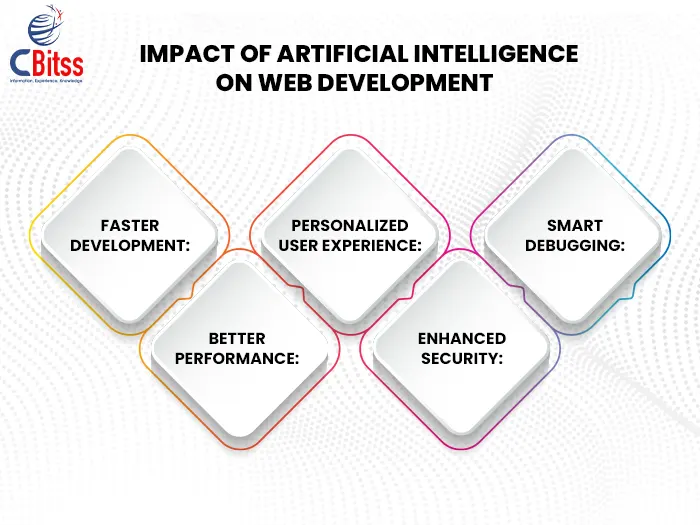Introduction
Top Coding Languages Behind Famous Websites! Powerful programming languages are essential for successful websites in today’s digital world because they guarantee efficient operation and secure performance while maintaining quick response times. A website’s performance depends heavily on the programming language used, which makes it essential for developers to choose wisely. Major platforms including Facebook, Google, YouTube, Amazon, and Netflix rely on various programming languages to support large numbers of users and complicated website functions. Specific programming languages are designed for efficient data processing while others focus on delivering optimal user interface and user experience.
This article delivers a clear explanation for anyone interested in learning which programming languages operate the top websites and the reasons behind their selection. This article examines the most-used coding languages for major websites by looking at their functions and benefits and how they influence web development.
Top Programming Languages Used in Famous Websites
Facebook – PHP, Hack, JavaScript, Python, C++
The largest social media platform Facebook chose PHP at the start because it allowed for simple and fast web development. The platform evolved Hack from PHP to improve its performance and efficiency.
PHP provides straightforward usage and accelerated web development processes.
Hack fixes PHP’s limitations and boosts speed.
The frontend user experience on our platform is powered by JavaScript (React.js).
Python and C++ manage extensive data processing operations while improving artificial intelligence capabilities.
Why Facebook Uses These Languages?
Facebook originally used PHP because it was straightforward but switched to Hack and C++ to improve performance and scalability.
Google – Python, Java, C, C++, Go, JavaScript
As the most widely used search engine this world has ever seen, Google utilizes a combination of powerful programming languages to process billions of searches every day.
C & C++ optimize search speed and efficiency.
Python functions as an essential tool for both artificial intelligence development and big data management.
Go serves as Google’s proprietary language to orchestrate their sophisticated service systems.
Web application interactivity improves through JavaScript frameworks including Angular and Vue.js.
Why Google Uses These Languages?
Google utilizes C and C++ to achieve high-speed performance while employing Python for artificial intelligence tasks and Go to handle large-scale services effectively.
YouTube – Python, JavaScript, C, Java, Go
YouTube operates as the largest video-sharing platform and needs powerful programming languages to enable seamless video streaming and accurate recommendations.
Python serves as the foundation for the backend operations and AI-based content recommendations.
JavaScript (React.js) improves user interface responsiveness.
C & Java optimize video playback performance.
Go efficiently manages YouTube’s complex microservices.
Why YouTube Uses These Languages?
Python serves as the optimal language for AI recommendation systems, whereas JavaScript enables users to interact with websites dynamically.
Amazon – Java, JavaScript, Python, C++
As one of the world’s biggest e-commerce sites, Amazon processes millions of transactions each day, which requires programming languages that offer both security and high performance.
Java provides secure operations for backend systems while managing transactions effectively.
JavaScript together with React.js and Angular enables users to enjoy seamless interactions.
Python supports AI-driven recommendations and analytics.
C++ boosts transaction processing speed while strengthening data security measures.
Why Amazon Uses These Languages?
Java ensures secure operations and stable performance while Python improves shopping experiences by tailoring product recommendations to individual users.
Instagram – Python, JavaScript
The leading social media platform Instagram relies extensively on Python and JavaScript to maintain its seamless functionality.
The Django framework in Python handles millions of photo and video uploads.
React.js enables JavaScript to deliver an interactive and attractive experience for users.
Why Instagram Uses These Languages?
Python accelerates feature development whereas JavaScript enhances UI responsiveness.
Twitter – Java, Scala, JavaScript
Twitter achieves real-time social interaction capabilities through its use of Java, Scala, and JavaScript.
Java and Scala handle backend tasks and enable quick data processing.
The JavaScript framework React.js boosts both visual aesthetics and user interaction on websites.
Why Twitter Uses These Languages?
Processing data in real-time requires proficient programming languages such as Java and Scala.
Netflix – Java, Python, JavaScript, Go
As a top streaming service worldwide Netflix uses various programming languages to ensure their systems run efficiently.
Java together with Python manages backend data operations and video streaming functionalities.
JavaScript through React.js provides a clean interface that engages users interactively.
Go enables efficient delivery of microservices and scalable content distribution.
Why Netflix Uses These Languages?
Java and Python enable high-quality video streaming without excessive buffering.
Impact of Artificial Intelligence on Web Development
Artificial Intelligence drives advancements in web development through increased speed and improved efficiency. The enhancement of AI integration will bring significant advancements to various website functions.
Faster Development: AI-enabled development tools speed up both website building and debugging processes.
Better Performance: AI optimizes speed and enhances efficiency.
Personalized Experience: AI analyzes user behavior for customized content.
Enhanced Security: AI detects and prevents cybersecurity threats.
Smart Debugging: AI identifies and fixes coding issues automatically.
The future of web development will be transformed by AI, along with emerging technologies

The future of web development is experiencing transformation through multiple applications of AI and emerging technologies.
Software development becomes automated through AI-Generated Code, which diminishes the need for human labor.
Non-programmers can build functional websites using No-Code & Low-Code Platforms.
AI-driven assistants utilize Voice & Chat-Based Interaction to improve customer engagement.
Blockchain integration provides secure data management along with transparent transaction processes.
Augmented Reality (AR) and Virtual Reality (VR) transform both gaming experiences and e-commerce platforms.
Comparison of Backend vs Frontend Programming Languages
| Feature | Frontend (Client-Side) | Backend (Server-Side) |
|---|---|---|
| Purpose | Manages visuals, UI interactions | Handles data processing, security, and logic |
| Languages | JavaScript, HTML, CSS | Python, Java, PHP, C++, Node.js |
| Frameworks | React.js, Angular, Vue.js | Django, Flask, Spring Boot, Laravel |
| Example | User clicks a button on a webpage | Server processes the request and returns data |
The web landscape in 2025 will remain dominated by Python and JavaScript programming languages along with AI-powered tools.
What programming language should you choose to learn by 2025?
Web Development: JavaScript (React.js) and Python (Django, Flask).
AI & Data Science: Python (TensorFlow, PyTorch).
Game Development: C++ or C# (Unity, Unreal Engine).
Enterprise Applications: Java (Spring Boot).
System Programming: Go and Rust.
The web landscape in 2025 will remain dominated by Python and JavaScript programming languages along with AI-powered tools.
Conclusion
New advancements in AI tools are making the fast-moving web development industry more efficient through smarter coding practices. Your project goals should determine your programming language choice while JavaScript, Python, and Java continue to dominate the market. AI development is transforming websites into platforms that offer enhanced personalization, improved security and automated processes.
